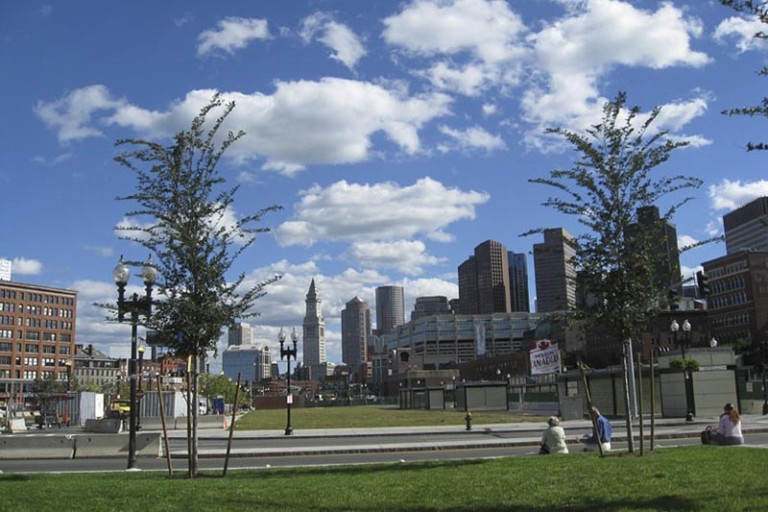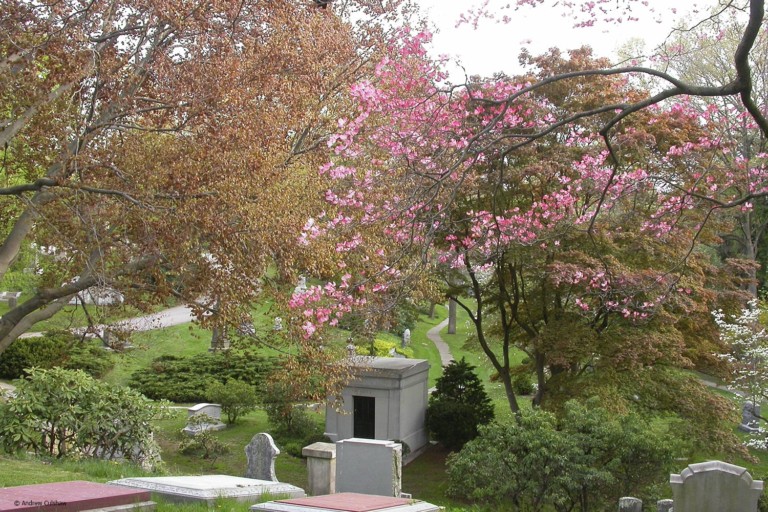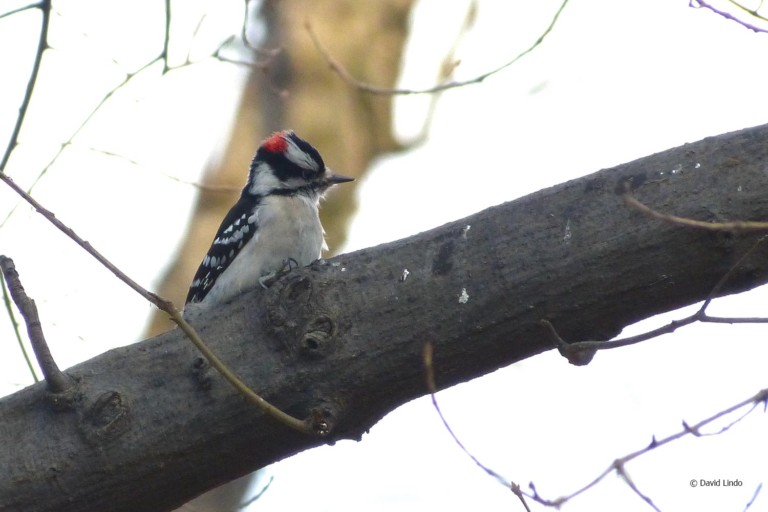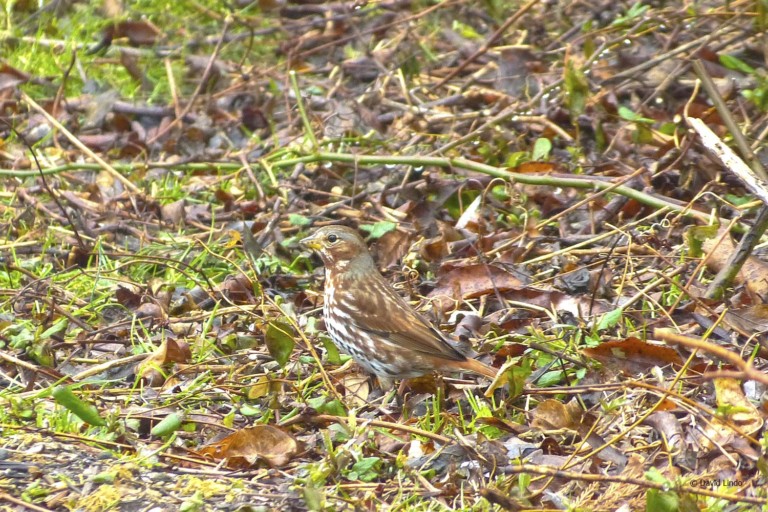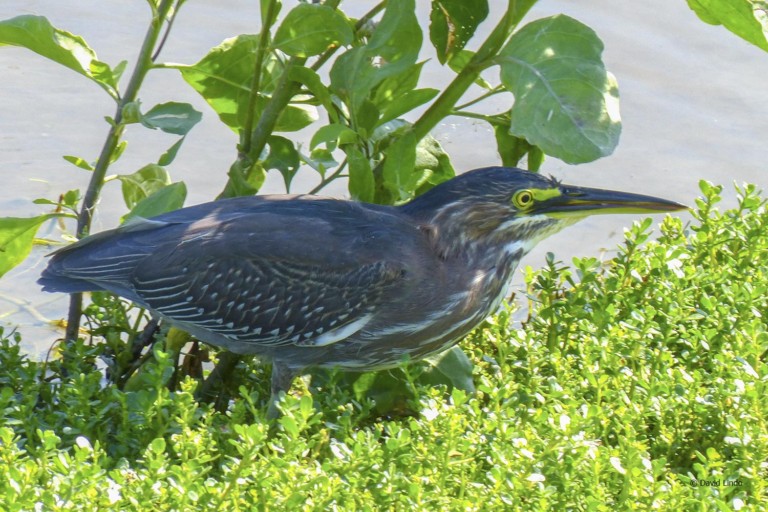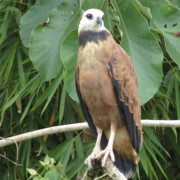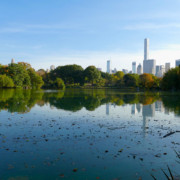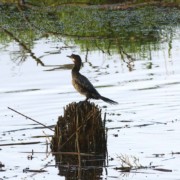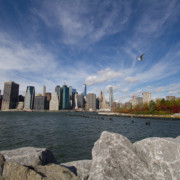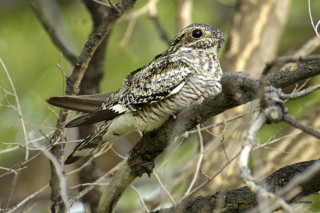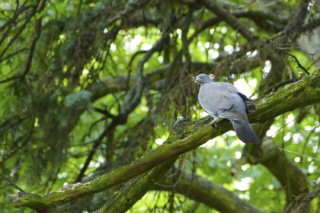For me, birding has always been primarily about covering a local patch, mainly in urban or suburban locations. One of the most memorable of these urban patches is Mount Auburn Cemetery in Cambridge, Massachusetts, USA. I was fortunate to live in the Boston area in the early 1990s and the site became a regular haunt. This brief article recounts some of my experiences in Mount Auburn throughout the year, but is focussed upon the spring migration, which can be spectacular.
Mount Auburn Cemetery was established as the first garden cemetery in the USA in 1831. It is a beautifully planted oasis within the sprawl of the city of Cambridge – home of Harvard and MIT and countless industries. Mount Auburn is barely a couple of miles from the coast and has considerable elevation lying adjacent to a major river. It is therefore not surprising that it is one of the best birding locations within the Boston area. The site is known primarily as a migration watch point, particularly during spring.
The site covers approximately 175 acres and hosts a large variety of trees and shrubs. There are a couple of fairly large ponds and the highest point provides panoramic views south across the Charles River to Boston and is a good vantage point for observing migratory hawks and hirundines.
The winter months can be quiet with a visit typically producing resident birds such as Downy Woodpecker, White-breasted Nuthatch, Tufted Titmouse and Blue Jay. Cedar Waxwing and American Robin can be present feeding on fruit left on the trees from autumn. True winter visitors include American Tree Sparrow and Dark-eyed Junco. The early migrants such as Red-winged Blackbird and American Robin start to appear from late February and mid March respectively, but by late March or early April the first Tree Swallows and Eastern Phoebes have made an appearance.
Diversity really increases as April progresses and the first of the migratory warblers are seen during this month – Yellow-rumped, Pine and Palm can all be found from about the third week. Other visitors at this time include Hermit Thrush, Ruby-crowned Kinglet and a selection of sparrows. However, it is during May that Mount Auburn really becomes a world class birding destination.
The trees can be full of warblers early on a May morning with the best falls of migrants typically occurring after the winds have switched to a south or southwesterly quarter overnight, especially if a cold front has also passed. My notes for 9th May 1990 record a cloudy morning clearing to give warm and sunny conditions with a moderate southwesterly wind. The commonest warbler was Yellow-rumped with 40+ birds present along with slightly lower numbers of Black-and-white Warblers. Among the 14 other species of warbler present were a Cape May – an uncommon visitor, three flaming orange Blackburnians, three Prairies, a couple of Wilson’s and eight Magnolias. The warblers are only part of the story. Blue-headed Vireos were present in double figures. A couple of Least Flycatchers were readily identifiable by song, Red-breasted Nuthatches trumpeted away and waders included Spotted and Solitary Sandpipers. Nearly 60 species were logged in a couple of hours before heading off to work.
Shortly after entering the main gate of the cemetery, a path to the left (Indian Ridge) becomes a useful elevated vantage point. The middle branches of the large trees in Dry Dell below are around head height here, effectively bringing the birds closer. At the end of Indian Ridge it is possible to drop down to either of the two ponds – the larger Halcyon Lake or the aptly named and more enclosed Spectacle Pond (aka Auburn Lake). If time is limited, I prefer to skirt Spectacle, scanning the muddy edges for Northern Waterthrush, Spotted Sandpiper or Green Heron. One can then climb a further ridge, making progress towards the tower via the shaded Dell and its small pond with possibilities for thrushes and Ovenbird.
On the cool, drizzly morning of May 18th 2005, Mount Auburn was again alive with birds. Yellow-rumped was still the commonest warbler, but the supporting cast was slightly different and included good numbers of Ovenbird, two each of Bay-breasted and Tennessee and several Blackpolls in smart summer dress. Thrushes included Hermit, Swainson’s, Veery and Wood. Northern Orioles were calling seemingly everywhere and three male Bobolinks flew over.
As spring gives way to early summer, there is still a chance of the odd special bird – a Mourning Warbler or an Olive-sided Flycatcher, perhaps – but overall things become a little sleepy at Mount Auburn. Certainly it is now possible to lift one’s binoculars without attracting a crowd! Mount Auburn has hosted around 50 breeding species in recent times, including Red-tailed Hawk, Northern Flicker, Baltimore Oriole and Eastern Phoebe. At this season it is sufficient to get away from the hustle and bustle of the city, enjoy the flowers and trees and pick up the odd lazy summer songster.
Autumn birding at the site is less frenetic than spring and large falls of migrants are unusual. Nevertheless, a good selection of birds passes through, including many warblers – now in their drab non-breeding plumage and demanding close scrutiny. There is an additional advantage to Mount Auburn at this season. Many tourists travel to New England to admire the fall foliage, but here, in the heart of urban Cambridge, the spectacle is almost as impressive.
Since coming back to the UK I have been fortunate to return to the area many times and find that it has lost none of its charm – or birds. For anyone who happens to be in the vicinity, Mount Auburn Cemetery would certainly repay a visit at any time of year.
Andrew Culshaw
June 2008


